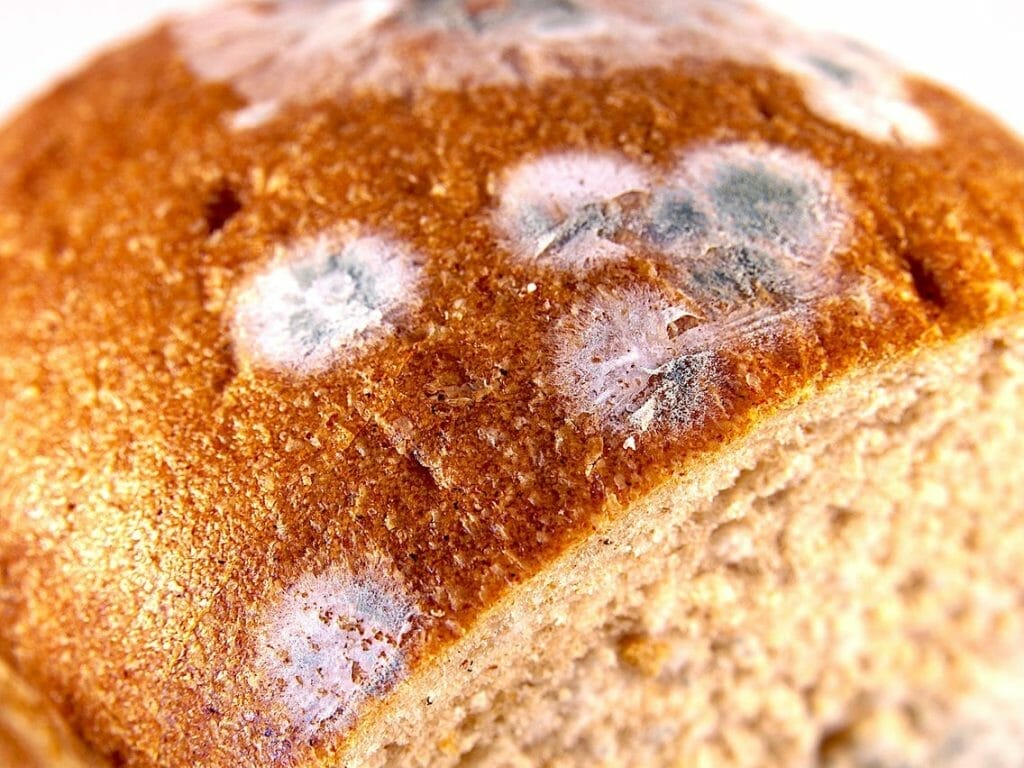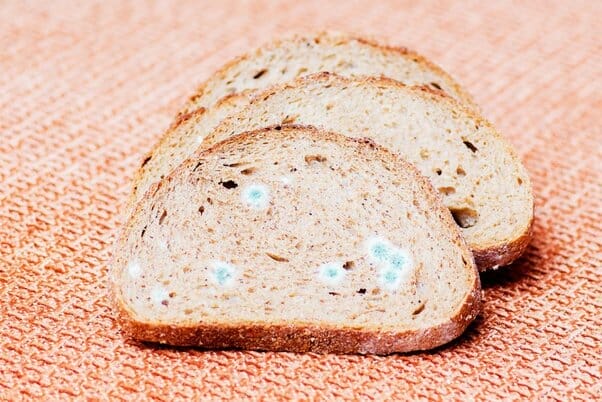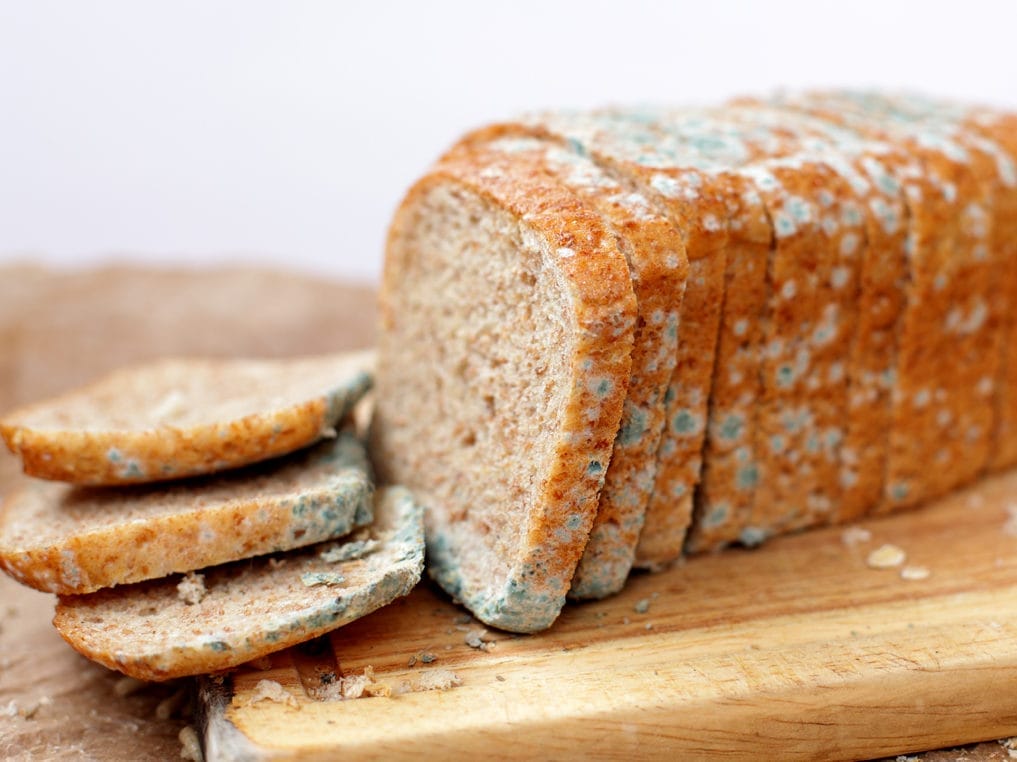Why You Shouldn’t Eat Mouldy Bread
It’s 1 a.m. You’re yearning a peanut butter and jelly sandwich — or maybe a slice of grilled cheese. You open the bread bag and– ugh!– the bread is blue with mould along one edge. As you’re attempting to decide whether to throw the bread away, you keep in mind that penicillin is made from mould. That makes it OKAY to eat? Think again. Let Tropika Club run you through on what you should not eat mouldy bread.
Table of Contents
No Time to Read? Here’s a Snappy Summary of This Article
- Mould and Mushrooms: Mould and mushrooms are both fungi, but they have different structures and nutritional values. Mushrooms are edible because they are cultivated in controlled environments and harvested before they produce spores. Mould is not edible because it grows on spoiled food and can produce toxins that are harmful to humans and animals.
- Aflatoxin and Mould: Aflatoxin is one of the most dangerous toxins produced by some moulds, especially those that grow on grains, nuts, and legumes. Aflatoxin can cause liver damage, cancer, and even death in humans and animals. Aflatoxin is not destroyed by cooking or freezing, so it is important to avoid eating mouldy food that may contain it.
- What about Penicillin?: Penicillin is a type of antibiotic that was discovered from a mould called Penicillium. Penicillin is safe to use as a medicine because it is purified and tested before being administered to patients. Penicillin is not safe to eat as a mould because it can cause allergic reactions, digestive problems, and resistance to the antibiotic.
- Just Skip It: The bottom line is that eating mouldy bread is not worth the risk of getting sick or worse. There is no way to tell how much mould or toxins are present in the bread, and cutting off the mouldy part is not enough to make it safe. The best thing to do is to throw away the mouldy bread and buy or make fresh bread instead.
Read Also:
Mould and Mushrooms
If you eat that mouldy bread, here’s the thing on what may occur. Moulds originate from the very same family as mushrooms. In fact, if you look at moulds with a microscope, you’ll see that they often look like little mushrooms: stalks with spores on the top. These spores offer moulds their beautiful colours– such as the blue-green shading lining your now inedible bread.
While moulds may be pretty, they can also be hazardous. Many varieties– there are hundreds of thousands of moulds– cause allergies and respiratory issues. In some cases, moulds produce mycotoxins, a toxin that makes individuals, animals and other animals sick. And guess where among the most infamous mycotoxins– aflatoxin– grows? That’s right: on grains and nut crops– 2 things that make up lots of pieces of bread

Aflatoxin and Mould
Aflatoxin, a cancer-causing mould discovered around the globe, is one of the most studied and kept track of moulds out there. Despite all the attention it gets, this mould has actually not been gotten rid of– though manufacturing plants across the world are kept track of to guarantee levels of aflatoxin remain within acceptable limitations.
Aflatoxins are poisonous substances produced by certain kinds of fungi (moulds) that are found naturally all over the world; they can contaminate food crops and pose a serious health threat to humans and livestock. Aflatoxins also pose a significant economic burden, causing an estimated 25% or more of the world’s food crops to be destroyed annually.
Aflatoxins are potent carcinogens and may affect all organ systems, especially the liver and kidneys; they cause liver cancer, and have been linked to other types of cancer – AFB1
is known to be carcinogenic in humans; the potency of aflatoxin to cause liver cancer is significantly enhanced in the presence of infection with hepatitis B virus (HBV).

What about Penicillin?
Back to the 1 a.m. piece of bread with the mould on one edge. What if you cut off the musty bits and simply consume the rest? Certainly, that’s OKAY, best? Incorrect. What you see on the edge of bread may be only the suggestion of the mould. From the stalks, mould can shoot roots down into the bread. These roots are where the mycotoxins like to grow. Besides, undetectable bacteria that can likewise make you sick might be tagging along with the mould.
So, while your high school science instructor was right about penicillin being made from a mould, it is not a great idea to try to get this bacteria-fighting representative from musty bread. The next time you’re craving a PB&J or grilled cheese, have a look at your bread thoroughly. You may be better off without a midnight treat if there’s mould on the surface area.

Just Skip It
Aflatoxin, a cancer-causing mould found around the world, is one of the most studied and kept track of moulds out there. Back to the 3 a.m. piece of bread with the mould on one edge. What you see on the edge of bread might be only the idea of the mould. While your high school science instructor was ideal about penicillin being made from mould, it is not an excellent concept to try to get this bacteria-fighting agent from musty bread.
:max_bytes(150000):strip_icc()/6788-amish-white-bread-DDMFS-4x3-6faa1e552bdb4f6eabdd7791e59b3c84.jpg)
Conclusion
You might think that eating mouldy bread is no big deal. After all, mould is just a type of fungus, right? And some fungi are edible, like mushrooms. So what’s the harm in nibbling on a slice of bread that has a little green or white fuzz on it?
Well, as it turns out, a lot. Eating mouldy bread can be very bad for your health.
So what should you do if you find mould on your bread? Should you just cut off the mouldy part and eat the rest? No, you shouldn’t. Cutting off the mouldy part is not enough to make your bread safe to eat. That’s because the mould can spread invisible spores throughout the bread, even if you can’t see them. These spores can still contain toxins that can make you sick.
The best thing to do is to throw away the mouldy bread and buy or make fresh bread instead. You can also prevent mould growth on your bread by storing it in a cool, dry place or freezing it if you want to keep it for longer.
Eating mouldy bread is not worth the risk of getting sick or worse. Mould is not something you want to mess with. It can ruin your food and your health. So next time you see some fuzz on your bread, don’t hesitate to toss it out.
At Tropika Club Magazine, we care about your well-being and happiness. We want you to enjoy your food and your life without worrying about mould or other hazards. That’s why we share tips and tricks on how to stay healthy and safe in our articles. We also help you find the best deals and discounts on beauty, wellness, and fitness services in Singapore. So check out our website and subscribe to our newsletter for more useful information and offers. And remember: don’t eat mouldy bread!

Frequently Asked Questions (FAQ)
Q: How can I tell if my bread is mouldy?
A: Mouldy bread usually has visible signs of fuzziness, discoloration, or sliminess on the surface or inside the bread. However, some moulds may not be easy to see with the naked eye, so it is best to check the expiry date of your bread and smell it before eating. If your bread smells sour, musty, or stale, it may be mouldy.
Q: What should I do if I accidentally eat mouldy bread?
A: If you eat mouldy bread, you may experience symptoms such as nausea, vomiting, diarrhea, abdominal pain, or allergic reactions. Depending on the type and amount of mould you ingested, you may also develop more serious complications such as liver damage or cancer. If you feel unwell after eating mouldy bread, you should seek medical attention as soon as possible.
Q: How can I prevent mould growth on my bread?
A: The best way to prevent mould growth on your bread is to store it in a cool, dry place or freeze it if you want to keep it for longer. You should also avoid touching your bread with wet or dirty hands, and use a clean knife to slice it. You should also consume your bread within a few days of buying or baking it, and discard it if you notice any signs of mould.
Q: Where can I buy fresh and delicious bread in Singapore?
A: Singapore has many bakeries that offer a variety of breads, from sourdough to pastries. Some of the best bakeries in Singapore that will deliver bread to your doorstep are:
- Sourbombe Bakery: This bakery specializes in sourdough croissants and bomboloni (stuffed doughnuts) with natural colours and flavours.
- Bread Yard: This bakery offers fluffy bakes of various varieties, from plain bagels to crusty sourdough. They also have a bread subscription plan that will ensure a regular supply of freshly baked goods.
- Paul: This bakery is known for its warm French pastries, such as croissants, muffins, and sandwiches. They also have an All-Safe All-Day Breakfast set that comes with viennoiserie, eggs, ham, cheese, and more.

Have an Article to Suggest?
Tropika Club is always looking for new and exciting content to feature in their magazine and they value the input of our readers. If you have any noteworthy content or articles that you believe would be a great addition to Tropika Club’s magazine, we are open to suggestions and encourage you to reach out to us via email at [email protected]. By doing so, Tropika Club values your expertise and knowledge in the matter and appreciates your willingness to help. We will review your recommendations and update our list accordingly
Meanwhile, Check Out Tropika Club’s Ecosystem of Websites

Tropika Club Magazine – Tropika Club Magazine is a Singapore-based publication that features articles on a wide range of topics with a focus on local businesses and content for the region. The magazine emphasizes supporting local businesses through its #SupportLocal initiative, which includes coverage of everything from neighborhood hawker stalls to aesthetic clinics in town. In addition to highlighting local businesses, Tropika Club Magazine also covers a variety of local content, including beauty, lifestyle, places, eats, and what’s on in Singapore and the Asia Pacific region.
Tropika Club Deals – Tropika Club Deals is a leading online deals and voucher shopping site in Singapore, offering amazing discounts on beauty, wellness, and fitness products and services. It’s the perfect platform for customers who want to discover the best deals without having to commit to a specific appointment date and time. These deals are available at major beauty stores, facial salons, hair salons, and other brands in Singapore, with no minimum spend required. Choose from guaranteed discounted deals in the categories of hairstyling, hair removal, facial & aesthetics, body slimming, brows & lashes, nails & makeup, massage & spa or fitness & wellness. Tropika Club Deals is also ideal for customers who want to buy vouchers as gifts or to use for the future. So whether you’re looking to save money on your next haircut or want to treat yourself to a relaxing massage, Tropika Club Deals has got you covered with the best voucher and coupon deals in Singapore!




